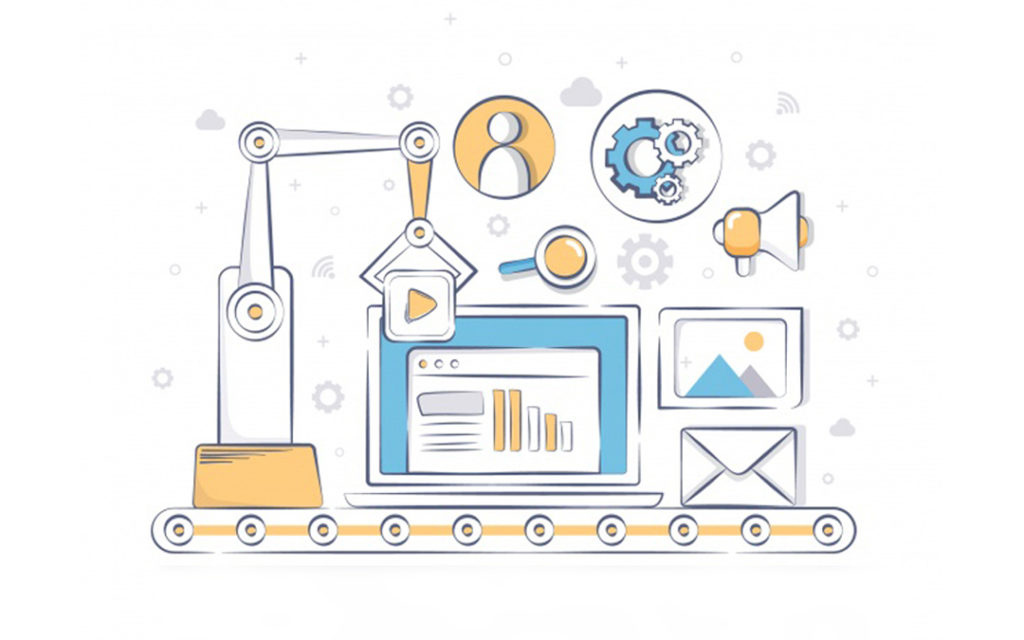Being automation-ready a mandate now for enterprises
Last year, top technology companies, #Microsoft and #Amazon committed to getting their AI-enabled assistants, #Cortana and #Alexa, respectively, to communicate with each other in the near future. #Google has recently enabled suggestions mode in its email for better and faster usage. The base of these innovative strides in #automation is to strengthen the workplace of the future and also empower organisations at large to adopt #automation completely. And tech giants have understood this. Amidst hyper-competitiveness, organisations are under pressure to reduce operational complexities, increase productivity and lower the cost of transformation.
However, while much of the enterprise #automation is now an over-used terminology in the context of enterprises, several leaders are still not ready for a complete #automation of their enterprise. However, it is seen companies that are ready to automate, ready to quickly adopt technologies have a higher chance of succeeding operationally.

So why the delay in implementation?
It has been observed that most organisations are under-prepared for digital transformation. Emerging consumer needs, diverse business requirements and complexities prevent organisations to take the decision.
Take, for example, the case of hospitals. While many functions are done in-house, a number of them can be automated. But hospitals are still lagging in terms of adoption of #automation. In comparison to this, several other sector companies are moving fast on being automated. This includes #retailing, #logistics and #warehousing, travel tour operators, etc. All these industries are using #automation at an advanced level to enrich the user or consumer experience.
How real is the need for automation?
To answer this question, let us look into the opportunities and the future demand that is already evident. We all agree that there are opportunities for companies to leverage technology and grow. However, the #transformation is not a simple, “we sell, you adopt” model. The entire application has to integrate with the existing processes and business. And a number of sectors and verticals require automation.
According to a consulting firm AT Kearney’s report Unleashing the power of AI in #Enterprise#Automation, advances in the underlying machine learning algorithms will continue to accelerate, suggesting that the landscape of technologies related to enterprises will continue to evolve and subsequently demand #automation from organisations.
According to the findings of HFS Research, the enterprise automation and artificial intelligence market will become a USD 10 bn market by the end of 2018. Also, the market of the #intelligent #process #automation segment will reach the size of USD 11.5 bn in 2021.
What are the direct benefits?
Smarter applications are already transforming companies. #Automation brings efficiency is a no-brainer. However, it is worth understanding how will it create efficiencies. First, there will be strong end-to-end process mapping. Thus, each process within the entire system will have better visibility. Second, the transformation can infuse an instant connect with consumers/end-users, who demand refined processes.
Third, the organisation through automation will have a better understanding of its data produced across various departments/functions. Enterprise automation creates a number of data platforms across function, which then become the information centres of immense knowledge on running the processes. Once analyzed, the same data can be utilized to identify problems and remove bottlenecks. This is part of the entire predictive analysis that companies can do on their own to gauge the future.
It would be thus easier for corporates to take an informative decision. But there are challenges to this transition. Other than the complexities of processes, a longer preparatory period for complete adoption is often a challenge. Constant evolution asks for a quick turnaround. Hence, initial user resistance should be removed.
Organisations should thus look at the following factors:
1) The cost of change: There can be multiple functions and their costs involved in the transformation – right from the development of a customized application cost to the switching cost to the implementation. Thus, companies going to a vendor for enterprise automation will have to factor in these costs as a collective expense.
2) The preparedness of your current processes with automation: Often the level of preparedness of your ecosystem may not be as high as it is required by the automation tool. You may, therefore, require a process manager and expert who can guide you to first be ready for automation.
A vendor providing enterprise automation will have to bring leading practices to the corporate to improve efficiency. With this alliance, the vendor should be in a position to first draft a strategy and a solution to the current bottlenecks.
Amidst the modern digital change, enterprises must embrace the change at an accelerated pace to deliver high-level consumer experiences across its multiple functions. However, a strategy-based approach to develop automation capabilities within the system will ensure success in the medium to long term. It is believed that enterprise automation in the next 5-7 years will be the core of every aspect. It is not a choice it is a mandate now for companies.

